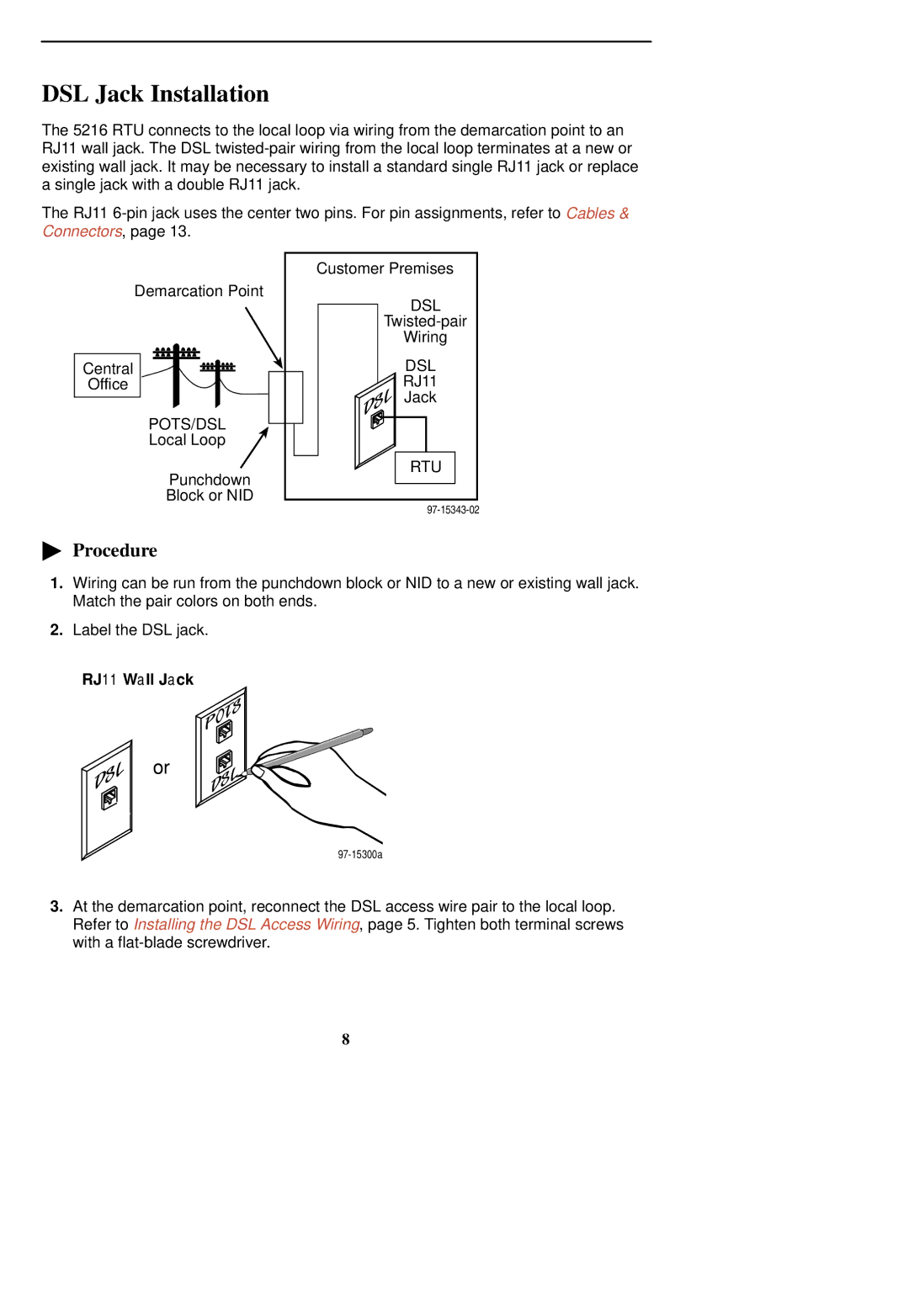5216 specifications
The Paradyne 5216 is a high-performance multi-service access device designed to facilitate the seamless integration of multiple communication technologies within a single platform. As a vital component in today's rapidly evolving telecommunications landscape, the 5216 stands out for its flexibility and robust feature set, making it ideal for service providers and enterprises looking to enhance their network capabilities.One of the main features of the Paradyne 5216 is its support for various connectivity options, including T1, E1, and SHDSL interfaces. This versatility allows users to connect a wide range of services and equipment, enabling efficient data transmission and communication. Additionally, the device offers integrated Ethernet capabilities, supporting both traditional and next-generation services, which is critical for meeting the demands of modern bandwidth-heavy applications.
The 5216 employs advanced technologies that enhance performance and reliability. For instance, it utilizes adaptive rate-shaping techniques to ensure optimal data flow, reducing latency and minimizing packet loss. This feature is particularly beneficial in environments where data traffic fluctuates, as it enables the device to dynamically adjust to changing conditions. Furthermore, the built-in error correction mechanisms improve overall communication integrity, ensuring that data is transmitted accurately.
Another defining characteristic of the Paradyne 5216 is its management capabilities. The device offers comprehensive monitoring and control through a user-friendly graphical interface, simplifying network administration. It supports standards-based protocols like SNMP, allowing for remote management and integration into various network management systems. This feature is crucial for service providers who need to ensure uptime and efficient resource allocation.
In terms of scalability, the 5216 is designed to grow with business needs. It can easily accommodate increasing bandwidth demands without requiring significant hardware upgrades. This scalability is further supported by its modular architecture, enabling users to customize the device according to their specific requirements.
In conclusion, the Paradyne 5216 stands out as a versatile and reliable solution for advancing multi-service access needs. With its diverse connectivity options, advanced technologies, robust management features, and scalability, it serves as a solid foundation for enhancing both consumer and enterprise telecommunications infrastructures, positioning organizations to thrive in a digital-first world.

